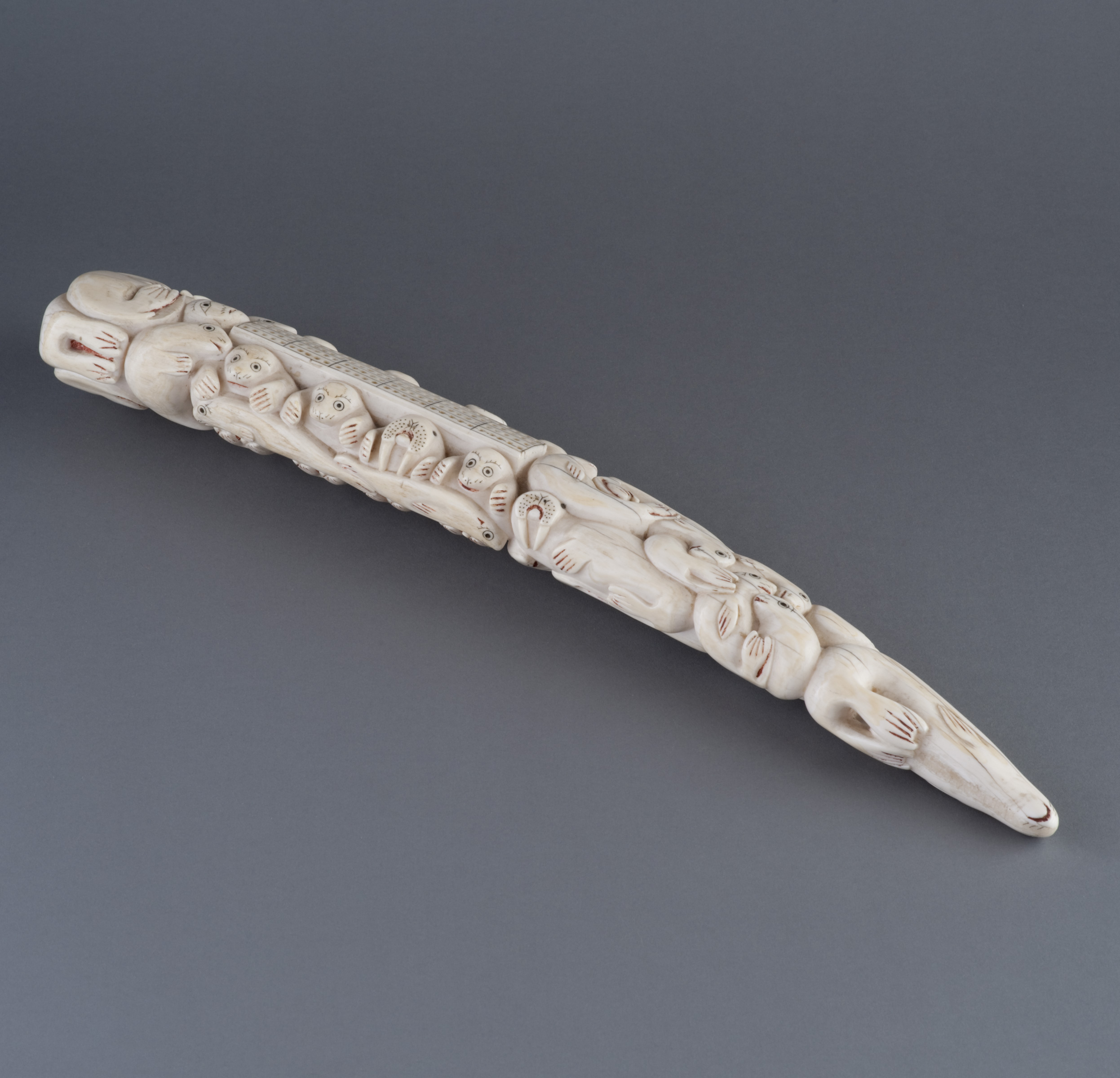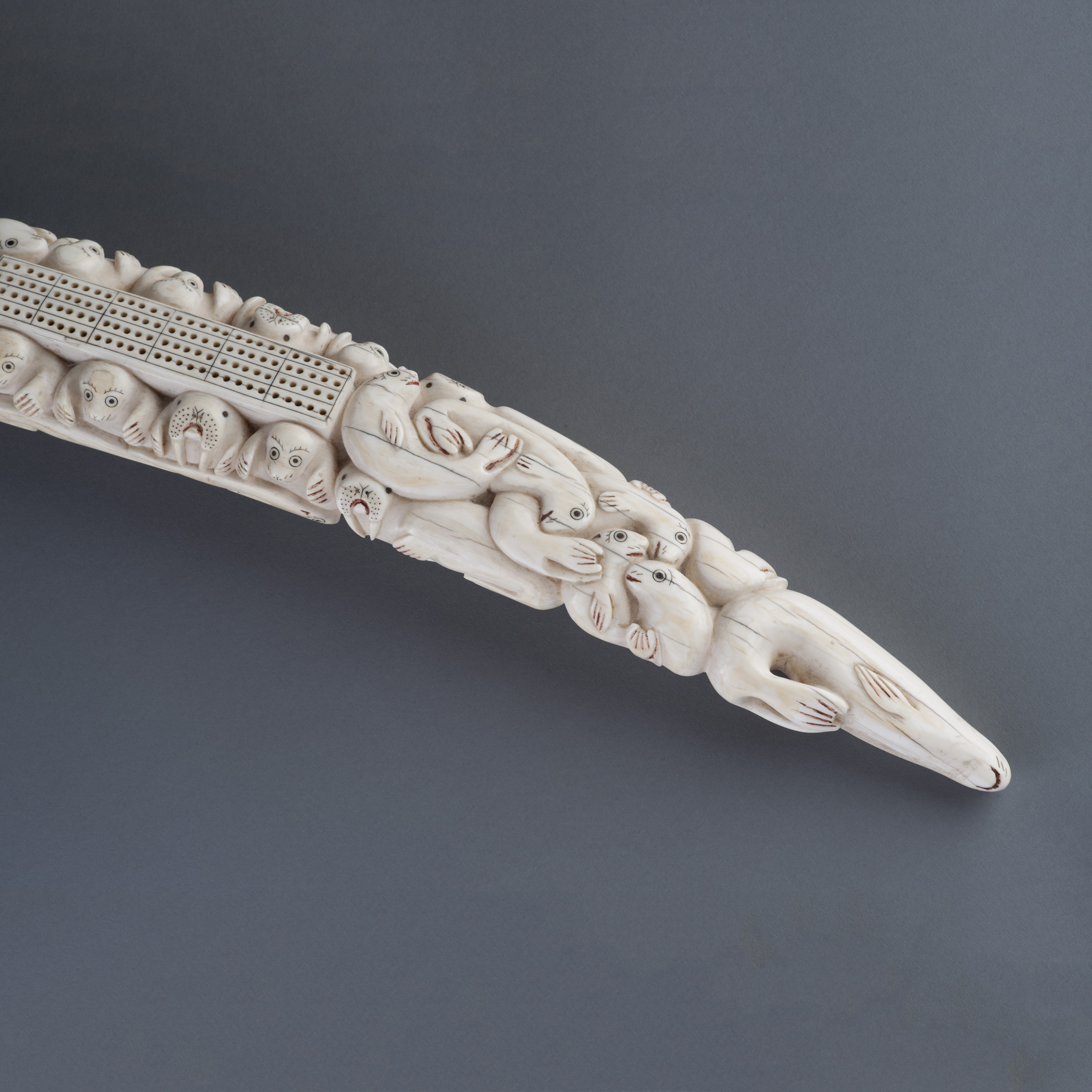Lot 124

Additional Images

Note:
“Inupiaq peoples were engraving representational images on ivory long before contact with Euro-Americans. Linear and circular designs have been found engraved on utilitarian tools at the earliest archaeological sites in the region and ivory featuring pictorial designs can be dated back to A.D. 1200-1800 (the time of Thule culture).
Northern Alaskans sold their belongings and engravings to occasional travelers and laborers on board ships for many years after arrival of Euro-Americans, but it was not until the gold rushes of the Klondike and Nome that permanent markets for Northern Alaskan art identified as “market art,” art described by Dorothy Ray Jean as art generally made for non-native consumers, was established.
In the first two decades of the 20th century, the new market for Northern Alaskan art emerged. As gold-rush customers realized the local Native population was extremely adept at copying illustrations and objects in two and three-dimensional forms, the market became flooded with ivory objects such as gavels, umbrella heads, napkin rings, tableware penholders, cigar holders, smoking pipes, long strings of beads, belt buckles, vases, toothpick holders, and many other objects.
The most popular item to appear among these goods was the cribbage board.”
State of Alaska Department of Education, Sheldon Jackson Museum, November 2013


